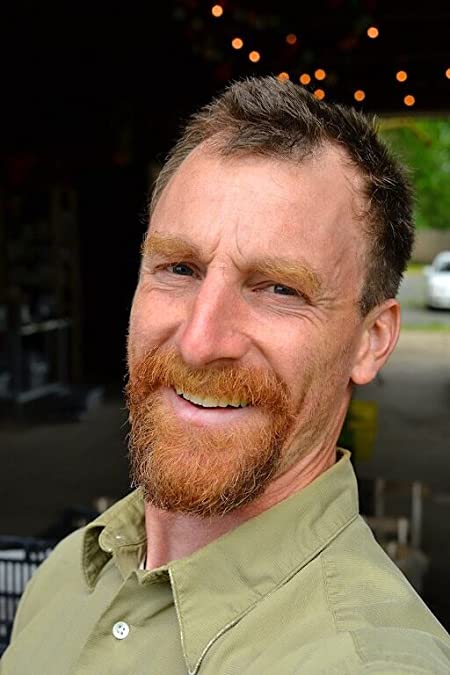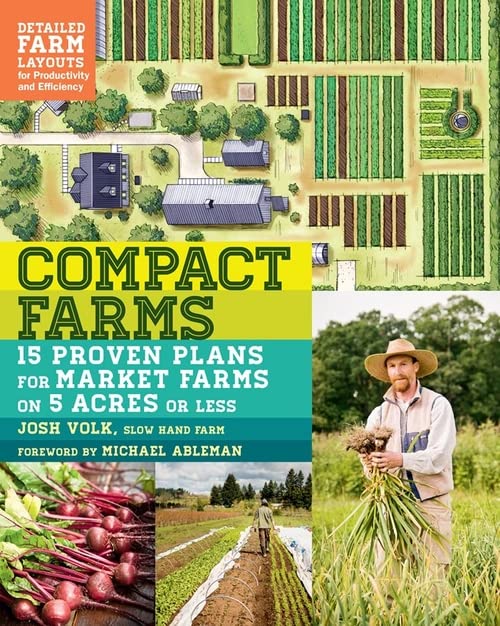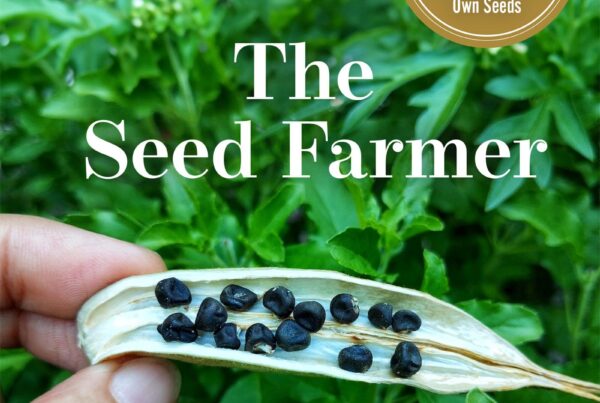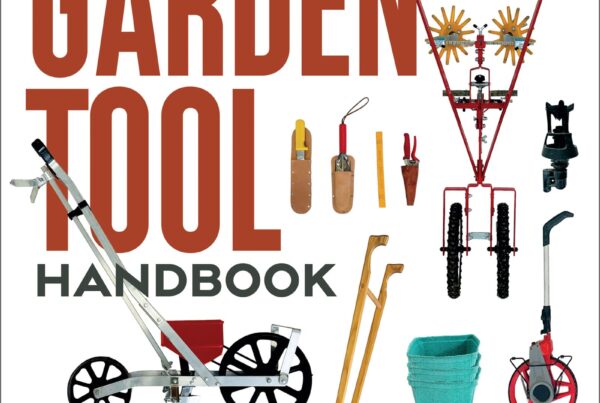Storey Publishing, 2017. 226 pages, 8†x 10â€, full color photos and illustrations, charts. $19.95.
Book Review by Pam Dawling
This book will be very useful to those preparing to buy or rent land for a small vegetable or flower farm, or those expanding, or downsizing, or re-thinking their small farm model. It is both practical and inspirational. The photos are treasure troves of beauty and ideas. The main part of the book consists of 15 well-organized presentations of a small farm, offering a range of possibilities. The same format is used for each, making comparisons quick and straight-forward. The intro page gives the “vital statistics’ of area in production, location (including whether urban/peri-urban/sub-urban/rural), crops grown, markets and year started. We meet the farmers, and hear a potted history.
The introduction to the notion of thinking small (or “compact†as Josh teaches us to call this scale) explains that compact farms are easily manageable, with many tasks done with hand tools. Start-up and operating costs are reasonable, and money can be invested as success builds. They help build a sense of community, by virtue of being small enough for non-farmers to understand. They usually rely on a diversity of crops to spread risks, rather than an arsenal of pesticides to kill all the problems. The author lists the keys to success for compact farms as paying attention (to the land, crops, weather, seasons, markets, and maintaining resilience); setting yourself apart from large scale growers by growing appropriate crops and adding value; and developing stable systems that work (making improvements over the years, tied to the particulars of the farm and farmers).
The area in vegetable or cut flower production ranges from Josh Volk’s own 0.15 acres in Oregon to Peregrine Farm’s 4 acres in North Carolina, and includes 2.5 acres of rooftops in New York. Some of the farms also include fruit trees, poultry or bees.
For each farm there is a two-page spread with an attractive hand-drawn farm map with the important items tagged. These layouts will be a big help to anyone pondering how to efficiently pack in all the growing space and facilities needed. A compass North would have been helpful, but usually this can be deduced from the alignment of the greenhouses and hoophouses. If you buy the paperback book you could cut it apart and spread the maps round a table for direct comparisons.
The next, very helpful item is a big chart of the crops harvested each month. Here there is a lot of diversity. Some sell nothing till April or May, and close again at the end of October, some are almost year-round. Some have a full page of crops; one has lettuce year-round and coffee and 5 other crops (that’s in Hawaii). One sells winter crops, because their land is too wet to make an early start in spring. Many ways to produce healthy local food are demonstrated.
After each introduction, there are sections on customers and markets; labor; water; fertility; tools and infrastructure; greenhouses and propagation; seeding and planting; crop care (weed control, season extension, pest and disease control, trellising and pruning); harvesting and post-harvest; sales, communication and record-keeping. Studded throughout are the gems that tell how each farmer has adapted to their situation. Sidebars explain some practices with a bit of detail. How to do flame-weeding, make use of WWOOFers, learn useful skills, make use of hoophouses. Photos (worth more than a thousand words) demonstrate details of cart designs, root washers, a car port used as a wash-pack area, and rods welded onto the hood of a rototiller to mark rows.
The back of the book includes a section called “Nuts and Bolts†with gathered thoughts on planning and designing a farm, all the way from clarifying your goals, listing what you need as a minimum to achieve those goals, what you want to be doing on a day-to-day basis (managing a big crew or having your hands in the soil?), on to what you need to make your farm work (land, location, water quantity and quality, storage, roads, greenhouses, hoophouses, harvest, packing and storage space and equipment, livestock, retail space, office, a restroom near the fields, and housing. Lastly there is a chapter on making it work financially.
The farmers in this book tend towards organic, sustainable, socially conscious, ecological, biological, regenerative. This tendency is always a work in progress, not perfect. We know tractors pollute. These farms consider and value the “triple bottom line†of people, planet and profit, as the three pillars of sustainability. Crop rotation develops healthier soils, stronger crops (therefore potentially profit) and healthier people compared to pesticide-farming. Sustainability does not seek a static state, but continual improvement, so that we leave future generations at least as well off as we are.
John Jeavons of Ecology Action and the ground-breaking book How to Grow More Vegetables, Fruits, Nuts, Berries, Grains and Other Crops than You Ever Thought Possible on Less Land than You Can Imagine, was an early inspiration for the author. Jeavons promoted sustainability, soil fertility, food with high nutritional density, while using as little space and as few resources as possible. The many detailed charts in his book have been used by generations of growers since, to plan their small farms. Although we might not favor double-digging, as Jeavons once did, his biointensive methods are used around the world to maximize production of healthy local food.
Devising a system that will work very well for your farm will be helped by studying these 15 examples and learning how a decision about one aspect leads to a particular decision about another aspect. The details of each farm might set you thinking about aspects you had not yet considered, or might reassure you that what you see as a major obstacle can be overcome or side-stepped. Tractors are not essential. Pasture for a horse may use as much land as the production area. Don’t plan to farm alone: all the farms in this book have at least two workers. Everyone gets sick sometimes, or has to take a day to go to the city for a dentist appointment.
I wrote a short summary of each farm, but there isn’t space for all that here, so I’m shortening my notes right down. Most of these farms offer 24-36 crops during the season, grow on raised beds, have at least one hoophouse, and a wash/pack area. All have at least two workers, most also with seasonal help. Most use three markets: CSA, farmer’s market, restaurant or wholesale. Here, I’ve focused on the diversity.
 Josh starts with his own compact farm (Slow Hand Farm) in Oregon, the smallest in the book, at 0.15 acres. Josh wanted a hand-scale operation where he himself tended all the crops. Josh focused on specialty crops that gave high yields from small spaces, and could take a few days without attention, as he was only on the farm two days a week He designed a CSA with small shares, based on salad crops and a few other items. Deliveries were by a leased Bullitt cargo bike with an electric assist.
Josh starts with his own compact farm (Slow Hand Farm) in Oregon, the smallest in the book, at 0.15 acres. Josh wanted a hand-scale operation where he himself tended all the crops. Josh focused on specialty crops that gave high yields from small spaces, and could take a few days without attention, as he was only on the farm two days a week He designed a CSA with small shares, based on salad crops and a few other items. Deliveries were by a leased Bullitt cargo bike with an electric assist.
The second example is Eliot Coleman and Barbara Damrosch’s famous Four Season Farm in rural coastal Maine. There are two acres in crops and 8 acres in chicken pasture. Eliot is well-known for his ground-breaking books. Employees learn by working with mentors. Poultry are used in rotation to provide fertility for the soil that will later grow vegetables to sell year-round. Everything is very well-thought-out – you can read more in Eliot’s books.
Stephen Cook of the 0.75acre Cook’s Garden in a peri-urban setting in Ohio sells vegetables, plant starts, strawberries, cut flowers and honey. The farm layout has very little unused space. The vegetable beds have 2.5ft paths (considerably wider than most bed systems). Crops are sold May-October, plus asparagus in April. The farmstand has a bell to summon Stephen on his bike. He custom-harvests the vegetables. Stephen does not use winter cover crops, but instead sows buckwheat in empty beds in August, providing forage for his bees until it gets frost-killed. He uses tarps. Initially, he used landscape fabric and old hoophouse plastic that he already had. He is moving to just using landscape fabric. Wide beds require a way of reaching the center: he has a low-lying transplanting cart that straddles the bed, holding the plants and the farmer, moving backwards down the bed, kneeling on the cart while planting.
Linda Chapman at Harvest Moon Farm in rural Indiana produces vegetables, cut flowers and bedding plants on 2.5 acres. As she already owned the land, her start-up costs were minimal ($400). She enclosed her porch with plastic to make a greenhouse and used an old Gravely garden tractor for tillage. The farm includes blueberries and woodies (cut flowers with woody stems). Linda focuses more on the 39 flower crops in the warm season, then 24 vegetables in the cold months. Almost all annual crops are transplanted, from starts propagated in a 16x30ft well-insulated solar greenhouse attached to the barn. Linda uses an electric golf cart to move trays of plants to the garden and harvest buckets to the barn.
Peregrine Farm in rural North Carolina has 4 acres in production. Alex and Betsy Hitt grow vegetables, cut flowers, and blueberries. The Hitts created a corporation with 18 friends who invested $80,000 to start the 26acre farm. After the farm started to make a profit, Alex and Betsy were able to buy out all the other shareholders. They continued to live as if they weren’t making money, and now have a retirement fund. Their farm includes twelve seasonal Haygrove tunnels with sets of legs installed in multiple places, enabling rotation. Their 34 vegetables provide crops year-round. Water comes from two ponds, a creek and a well. They used to run 100 turkeys through the quarter-acre rotational blocks, depositing 500lbs manure per block during each stay. This great system had to stop when the local poultry processing plant closed.
Jeff Frank and Kristin Illick operate Liberty Gardens in rural Pennsylvania, growing on 1.5acres of family land which they use for free. January has no sales, and the other eleven months’ production involves 34 crops, peaking in September and October. Cover crops provide the basis of their soil fertility plan. They also make compost from leaf waste and crop residues. Orders for New York are shipped next-day delivery with UPS.
Kealaola Farm in Hawaii sells lettuce, other greens, beans and coffee grown on 3.8acres by Barry Levine and his rotating crew of six WWOOFers who stay in a row of tents. The crop calendar is very different from other farms in the book: seven year-round crops, with full-size and baby lettuce providing nearly all of the income and occupying most of the space. A bed can grow 6 crops of lettuce in one year, or 18 crops of baby lettuce. Unsurprisingly, there are no greenhouses or hoophouses here. Seed germination happens inside a tent, and seedlings grow to transplanting size on outdoor tables. Living on a remote island, Barry has to improvise when the unexpected happens, or supplies run out sooner than planned.
Les Jardins de la Grelinette in rural Quebec is run by Jean-Martin Fortier and Maude-Hélène Desroches. Jean-Martin is well-known for The Market Gardener, training classes, and work researching and teaching at La Ferme des Quatre-Temps. At les Jardins de la Grelinette, the farmers produce vegetables on 1.5acres. The map shows a very tightly-packed layout of 10 plots of beds, 4 hoophouses, a beeyard and chickens in the orchard. They are pioneers in tarping as a sustainable method of weed control and no-till soil preparation. They have 27 crops for sale from June to October, and a few in November. Purchased compost is used, with many beds growing more than one crop a year. A ten-year rotation plan helps ensure care of the soil. Their delivery van runs on straight vegetable oil.
At Groundswell Farm in rural Oregon, Zoe Bradbury grows 2.5 acres of vegetables, berries and flowers, and 1.5 acres of orchards, leasing family land alongside her sister’s salad greens farm and her mother’s greenhouse business. The women work like a producer cooperative, marketing together. They share a tractor, and handle CSA and restaurant orders, and deliveries collectively. Zoe has a full-time year-round foreman, and does some of her field cultivation with a Belgian draft horse. 32 crops are available during the February to early December season. They water from the creek, using pumps and drip irrigation. The greenhouse has a 4x32ft germination table with water pipes buried in sand. Thermostatically-controlled propane heat the water. Their cool summers mean field crops needing extra warmth are grown in chenilles (poly low tunnels covering two beds).
Mellowfields Urban Farm has 3acres in production in Lawrence, Kansas. Jessie Asmussen and Kevin Prather grow vegetables, culinary herbs and berries. Their farm is divided between two acres leased from the city and another acre at their home. The city’s Common Ground Program (owners of the land) aims to “transform vacant or under-utilized city properties into vibrant sites of healthy food production.†The two farmers took on a part-time harvest worker, and were able to increase market sales 40% above working alone, stay on top of things, and have more family time. Produce is available May to December. The Common Ground Program provides free compost made from city yard waste.
Full Plate Farm in the peri-urban Ridgefield, Washington area, where Danny Percich grows 3 acres of winter vegetables. The land is very wet in spring, so Danny chose a November-March CSA. April is time off, before planting starts in May. The map shows an intensively used area, including his house, and beds of root crops, alliums, long-season greens, winter squash, fast-growing greens, and popcorn. If you think this limited season does not offer many crop choices, note that they list 30, including stinging nettles in March! Danny works about half- to three-quarters of his time on the farm, saving 4 hours daily for his three children and partner.
Flywheel Farm in rural Vermont is run by Justin Cote and Ansel Ploog. They (alone) are growing vegetables, culinary herbs, eggs and rabbits on two acres. They negotiated a five-year rolling lease with the owners, and decided to start on half the land and do that well. They live elsewhere. Their crops are available late May to early November. The farmers built a well-designed compact wash/pack area, including a 5x7ft cooler. Ansel has included a page “Why We Farm†that explains how they aim to be part of a vibrant sustainable regional agricultural economy. Receiving appropriate financial compensation for farming work (done efficiently) is one of their goals.
Leap Frog Farm is 2.5acres of vegetables and 3 acres of fruit trees in rural California, farmed by Annie Hehner. She keeps goats for her own dairy supply. She lives in a simple house on the land, and pays rent to her parents for the cultivated land. The space includes a hay field, and orchards of young almonds, peaches, Asian pears, plums, and walnuts. Annie hires a friend to work full-time with her. Sales have a marked seasonality of 15 January-May crops, 14 June-December crops and several that mature in November. Annie borrows farm equipment from neighbors, and does a lot of improvising. She built a straw bale cooler that uses a CoolBot device in summer.
At Cully Neighborhood Farm in the city of Portland, Oregon, Matt Gordon grows vegetables on 0.5 acres for restaurants, a 40-member CSA and a juice company. He found some open land belonging to a church and school, and arranged a lease, including delivering some excess produce to the church’s food pantry. Matt works 40 hours a week during most of the season, and 20 hours from December to February. June-August he employs an apprentice for 30 hours a week. There is an outdoor classroom and a children’s garden of 12 boxed beds, run separately, but supported by the farm. Matt (and apprentice) grow 36 different crops, distributed May-late November.
Brooklyn Grange is a rooftop farm in Brooklyn and Queens, New York, growing 2.5 acres of mostly intensive vegetables. The farmers are Ben Flanner, Anastasia Cole Plakias, Gwen Schantz and Chase Emmons. At last! I was uneasy that all the photos of farmers so far in the book are white! Here we have a large diversity of farmers. Not particularly visible in the book, because the profile has no farmer photo, and the photos of workers all look white. But the Brooklyn Grange website shows many workers, and is worth a visit to see the roof top farm videos too. Their first rooftop, in Long Island City, is 6 stories up, and the second (in Brooklyn Navy Yard) is a dizzying 12 stories above ground. Everything goes up and down in freight elevators, although during construction they used cranes. They sell microgreens year-round, and 22 other crops May-November. There are 4 full-time farmers and extra seasonal workers. The 12†deep soil is light and fluffy, so hand tools do most of the work. They do sometimes carefully use a rototiller. A shipping container on the roof provides office space and a cooler.
This is a very practical book, and as I often say about farming books, the price of the book will steer you towards success and save you costly poor decisions.







